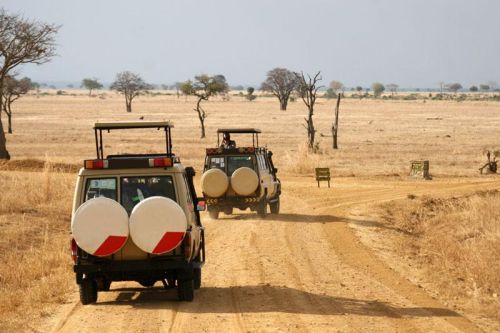Travel highlights Tanzania

Arusha and Mount Meru
Arusha is a small national park of fig tree forests, waterfalls, and the stunning Mount Meru in the background. It also included the Momela Lakes, Ngurdoto Crater, and tgreen highland forests. Game viewing around the Momela Lakes is relaxed and easy. Climbing Mt. Meru or enjoying the smaller trails that criss-cross its lower slopes is a popular activity for visitors to Arusha National Park. The three-day trek to reach the crater's summit is a quieter, and some say more challenging alternative than the famous peak of nearby Mount Kilimanjaro.
Lake Manyara
Lake Manyara National Park is a magical, beautiful park, close to the banks of soda water Lake Manyara. It's excellent for bird watching, and you may be able to spot the legendary Lake Manyara tree-climbing lion. Manyara is often visited for an afternoon at the start of a safari and/or a morning at the end, as it lies on route to and from Ngorongoro and the Serengeti.
Mafia Island
Mafia is a diver and angler's paradise in the Indian Ocean. The name Mafia probably stems from the Arabic morfiyeh, meaning "group" or "archipelago", or from the Ki-Swahili "mahali pa afya", meaning "a healthy dwelling-place". Mafia has a rich history, going back over 2,000 years. There are six major dive sites, and innumerable lesser sites that offer some of the best diving on the coast of East Africa.
Mount Kilimanjaro
Kilimanjaro is an undeniable part of the compelling beauty of East Africa. Not only is this the highest peak on the African continent; it is also the tallest free-standing mountain in the world. Kilimanjaro is one of the world's most easy to climb high summits. It's surrounded by lush mountain forest, inhabited by elephant, leopard, bufalo and other anumals. The top is a winter wonderland of ice and snow.
Ngorongoro
The Ngorongoro Crater is often called ‘Africa's Eden' and the ‘8th Natural Wonder of the World'. Within the crater rim, large herds of zebra and wildebeest graze nearby while neraby lions sleep in the sun. The Ngorongoro Crater and the Ngorongoro Conservation Area are without a doubt some of the most beautiful parts of Tanzania. Besides vehicle safaris to Ngorongoro Crater, Olduvai Gorge, and surrounding attractions, hiking treks through the Ngorongoro Conservation Area are popular too. Either way you choose to visit, the Crater Highlands are an unforgettable part of the Tanzanian experience.
Ruaha
Tanzania's second-largest national park after the Serengeti. Ruaha is known for its large elephant and buffalo herds and it's possible to see greater and lesser kudu as well as the antelope. As well as an abundance of lion, leopard and cheetah it is also home to the increasingly rare African Hunting Dog. Ruaha is a great year round park due to its good all weather road network. It has the lowest rainfall in Tanzania. June to November is driest with the focus of wildlife viewing around the river courses and permanent waterholes.
Selous
Selous is Africa's largest protected area uninhabited by man, where Tanzania's greatest population of elephants wander in an area bigger than Switzerland. A World Heritage Site, Selous contains about one third of all the wild dogs (often called painted dogs), in the world. Here in Selous they have boundless woodlands and savannahs in which to live. In the dry season an ancient migration of elephants takes place between the Selous and Mozambique's Niassa Game Reserves.
Serengeti
The Serengeti National Park is one of the most celebrated wildlife reserves in the world. The name Serengeti comes from the Maasai name meaning ‘endless plains', and these rolling distances of short grass plains provide an exceptional landscape for wildlife viewing; it is ultimate safari country. Large prides of lions laze easily in the long grasses, families of elephants feed on acacia bark, and you'll find giraffes, gazelles, monkeys, eland, and the whole range of African wildlife in abundance. The annual wildebeest migration through the Serengeti and the Masai Mara attract visitors from around the world, who travel to the open plains to witness the largest mass movement of land mammals on the planet. More than a million animals make the seasonal journey to fresh pasture to the north, then the south, after the biannual rains. The migration has become one of the legends of the Serengeti plains. Aside from traditional vehicle bound safaris, hot-air ballooning over the Serengeti plains has become a safari rite-of-passage for travel enthusiasts.
Zanzibar and Pemba
Zanzibar and Pemba are part of a coral reef barrier along the Tanzania Coast. You'll find crystal clear water, unspoilt white beaches and lush vegetation. Zanzibar is not only a beach destination and perfect to relax after safaris and treks, but it is also a place of great historical and cultural interest. The island of Pemba known as 'Al Jazeera Al Khadra' (the green island, in Arabic) is completely different from Zanzibar. It's a secret paradise, full of undiscovered paradise beaches and some of the best diving in the Indian Ocean.